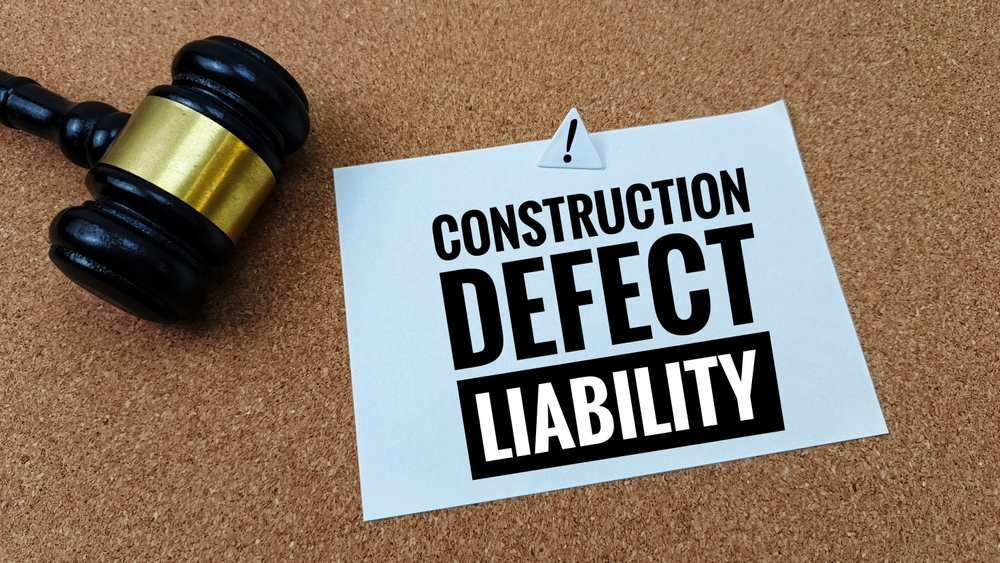

For contractors working in Oklahoma, being familiar with the Residential Contractor’s Right to Cure Law (Title 15, §15-765.6) is crucial. This law outlines specific procedures for resolving disputes related to construction defects. Compliance with the law can not only help resolve customer concerns efficiently but also minimize the risk of costly litigation.
This article explains the key points of the Oklahoma Right to Cure Law, including the notice homeowners must send, the contractor’s inspection rights, the timeframe for reasonable offers, and the consequences for homeowners who refuse reasonable offers.
Under the Right to Cure Law, homeowners who believe there is a construction defect must notify the contractor at least 60 days before filing a lawsuit. This notice period gives the contractor an opportunity to inspect and address the issue without immediately resorting to legal action.
The 60-day window is a crucial period that contractors should be prepared for. Homeowners are legally required to allow professionals the chance to make things right, ensuring disputes remain manageable and solutions are reached amicably wherever possible.
The homeowner’s notice must be detailed and specific. The key elements of the notice include the following:
The homeowner must clearly outline the nature of the alleged defect or issue. This includes a description of the problem and potentially any related damages it has caused. Vague or blanket complaints do not satisfy the requirements of the law.
While not explicitly required, it is helpful if homeowners include photographs, videos, or written documentation to support their claims. This allows contractors to prepare for the next steps, such as an inspection or repair plan.
For contractors, ensuring homeowners understand these requirements during project agreements can prevent delays or incomplete notices, streamlining the process if issues arise.
Yes, the Oklahoma Right to Cure Law grants contractors the right to inspect the alleged defect as part of their response to the homeowner’s notice. Upon receiving notice, the contractor can request access to the property to:
Contractors must communicate promptly with homeowners to coordinate an inspection date. Cooperation during this phase is critical for both parties, as it allows misunderstandings or minor issues to be clarified quickly before escalating the matter further. If disputes do escalate, experienced construction contract disputes attorneys can help you navigate the legal complexities.
After the inspection and assessment, the contractor has 45 days from the date of receiving the homeowner’s notice to make a reasonable offer to repair or address the defect. The goal of this offer is to resolve the issue amicably and avoid litigation.
A “reasonable offer” can include the following components:
It is in the contractor’s best interest to present a well-thought-out and fair offer within this timeframe. Failure to do so can lead to the homeowner moving forward with legal action, making it essential to stay on top of deadlines and deliver a professional response.
For homeowners, refusing a contractor’s reasonable offer to cure the defect comes with significant legal implications. If the offer complies with statutory requirements and they still reject it, the following consequences could apply:
If the matter goes to court, the homeowner may not recover more than the cost of the reasonable offer, even if they win the case.
The court may also limit or deny the homeowner’s ability to recover attorney’s fees, leaving them to absorb these expenses out of pocket.
Essentially, the law encourages homeowners to work with contractors toward a fair resolution before pursuing litigation, ensuring fairness to both parties. For contractors, this means that providing a reasonable offer is a critical step in protecting your business and avoiding unnecessary legal risks.
To maintain compliance with the Right to Cure Law and build strong relationships with homeowners, contractors should adopt these best practices:
During contract discussions, explain the Right to Cure process and their obligation to notify you of any concerns. This sets the expectation for collaboration and transparency. Having your contracts professionally reviewed through construction contract review services can help ensure these important provisions are properly included.
Document all steps taken after receiving a notice—from scheduling an inspection to delivering an offer. Timely communication demonstrates your commitment to resolving the issue professionally.
When disputes arise, consider involving third-party inspectors or specialists to validate your findings and provide unbiased input for your offer.
Maintain thorough records of all notices, inspections, repair offers, and communications. These documents can protect you in the event of legal proceedings.
The Oklahoma Residential Contractor’s Right to Cure Law provides a structured framework for addressing construction defect disputes—benefiting both contractors and homeowners. By understanding the law’s requirements and timelines, contractors can turn potential conflicts into opportunities to reinforce trust and demonstrate professionalism. For comprehensive legal support with construction matters, our construction law attorneys can help you navigate complex regulations and protect your business.
Always stay proactive, communicate clearly, and adhere to deadlines outlined in the law. Doing so not only minimizes legal challenges but also strengthens your reputation as a reliable contractor who prioritizes customer satisfaction.
By positioning yourself as a contractor who knows and follows the law, you set a standard of excellence that benefits your business and builds lasting client relationships.
Contact The Cromeens Law Firm today to discuss how we can help safeguard your contracting business and maintain positive client relationships while staying fully compliant with Oklahoma law.
Karalynn Cromeens is the Owner and Managing Partner of The Cromeens Law Firm, PLLC, with over 17 years of experience in construction, real estate, and business law. A published author and passionate advocate for contractors, she has dedicated her career to protecting the businesses her clients have built. Karalynn is on a mission to educate subcontractors on their legal rights, which inspired her books Quit Getting Screwed and Quit Getting Stiffed, as well as her podcast and The Subcontractor Institute.

